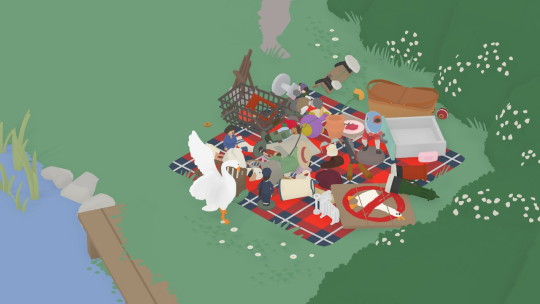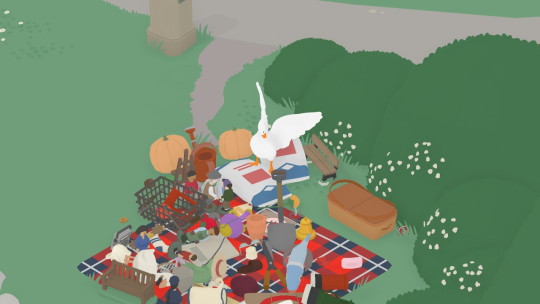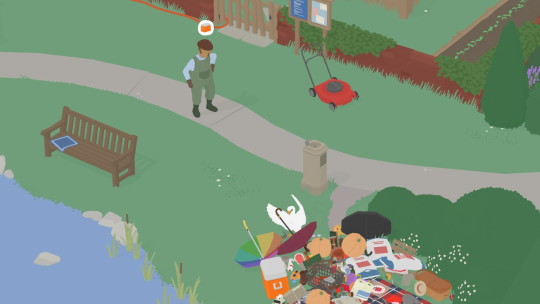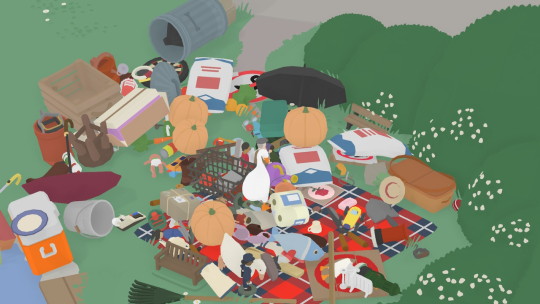In preparation of MoneyLab #7 in Amsterdam on November 14-15 I made the following link list. Many of the topics will be discussed there. No coincidence much of it is related to the Libra developments.
Best, Geert Lovink
MakerDAO decentralized stablecoin, collateral loans, and community governance
https://makerdao.com/en/
“The desire to travel far away and start a new currency will become a powerful driver of human expansion into space” (via Inte)
https://www.unchained-capital.com/blog/law-of-hash-horizons/
https://thenextweb.com/hardfork/2019/10/14/bitcoin-cryptocurrency-sextortion-masturbation-blackmail-monero-save-yourself-malware/
Olaf Scholz vs. Facebook’s Libra
https://hackernoon.com/germany-says-nien-to-facebook-exfederal-prosecutor-blocking-libra-will-bring-national-problems-frdm32e9
Zuckerberg at Washington hearing on Libra
https://www.coindesk.com/zuckerberg-facebook-would-quit-libra-if-association-launched-prematurely
Solution for Deepfake Problems…?
https://www.wired.com/story/the-blockchain-solution-to-our-deepfake-problems/
American conservaties, Libra and Europe
https://www.aier.org/article/sound-money-project/does-libra-threaten-monetary-sovereignty
Stolen: How to Save the World from Financialisation by Grace Blakely
https://repeaterbooks.com/product/stolen-how-to-save-the-world-from-financialisation/
Anti-globalization blog
http://www.ourworldisnotforsale.net
Ethereum: Scam or Iteration?
https://www.coindesk.com/scam-or-iteration-at-devcon-ethereum-diehards-still-believe-in-2-0
A gallery selling work of cryptoartists
https://knownorigin.io/artists
A London-based crypto artist
https://xcopyart.com/
Libra coalition is falling apart as eBay, Visa, Mastercard and Stripe jump ship
https://www.cnbc.com/2019/10/11/ebay-drops-out-of-facebook-libra-cryptocurrency-one-week-after-paypal.html
More on OneCoin crypto pyramid scheme court case
https://cointelegraph.com/news/bank-of-ireland-execs-back-out-of-testifying-in-onecoin-scam-hearings
The Radical’s Survival Guide to Adventures in Cryptoland: Can Cryptocurrencies Save Us All? (via Inte)
https://freerads.org/2019/09/05/the-radicals-survival-guide-to-adventures-in-cryptoland-can-cryptocurrencies-save-us-all/
Tank Magazine’s Libra link list
https://tankmagazine.com/tank/2019/07/libra-reading-list/
“Degrowth is about redistribution by design, not by collapse”
https://failedarchitecture.com/degrowth-is-about-redistribution-by-design-not-by-collapse/
Bitcoin will be how we transact with aliens
https://bitcoinmagazine.com/articles/op-ed-hear-me-out-in-a-post-area-51-world-bitcoin-could-be-our-best-hope-for-alien-interaction
A different look at the history of money, apparently more grounded what actually has happened (via Eduard)
<https://michael-hudson.com/2018/04/palatial-credit-origins-of-money-and-interest/>
EU-Funded Projects in Blockchain Technology
https://ec.europa.eu/digital-single-market/en/news/eu-funded-projects-blockchain-technology
Rhythm in Economic Space by Stamatia Portanova
https://transversal.at/transversal/0318/portanova/en
Proposal for voluntary degrowth by redesigning money for sustainability, justice, and resilience (via Patrice)
https://journals.uair.arizona.edu/index.php/JPE/article/view/20900
France to block Facebook’s Libra cryptocurrency in Europe
https://www.theguardian.com/technology/2019/sep/12/france-block-development-facebook-libra-cryptocurrency
Fund to launch alternative business models for online content
https://foundation.mozilla.org/en/blog/100-million-investment-reshape-economics-web/
Money is the Oxygen (via Patricia)
https://www.newyorker.com/news/daily-comment/money-is-the-oxygen-on-which-the-fire-of-global-warming-burns
Laura Lotti: Blockchain Affordances (via Luca Recano)
http://mediatheoryjournal.org/laura-lotti-blockchain-affordances/
Gavin Mueller: Digital Proudhonism (via Luca Recano)
https://www.boundary2.org/2018/07/mueller/
Coinbase: The 2019 Leaders in Crypto Education
https://blog.coinbase.com/highereducation-c4fb40ecbc0e
Proposal making in DAOs: the limitations of “Anyone Proposes Anything”
https://hackernoon.com/proposal-making-in-daos-the-limitations-of-anyone-can-propose-anything-gn3lh35w1
ECB’s Mersch Warns Over ‘Treacherous Promises’ of Facebook Libra
https://www.coindesk.com/ecbs-mersch-warns-over-treacherous-promises-of-facebook-libra
French pry-trance festival that promotes local currencies
https://www.hadra.net/HTF2019/village.php?lang=fr&&page=village&&subpage=conferences
Bitcoin Rap Battle Debate: Hamilton vs. Satoshi (via Maisa)
https://www.youtube.com/watch?v=JaMJi1_1tkA&
RIP Decentralization–Sorry, Bitcoin, it’s Libra’s turn now (via Eduard)
https://medium.com/futuresin/rip-decentralization-ae2d13417da7
Libra: The social media company’s move into cryptocurrency takes advantage of regulatory oopholes
https://onezero.medium.com/the-libra-masterplan-dc9560e41c87
What’s wrong with Ethereum?
https://hackernoon.com/everything-wrong-with-ethereum-in-2019-r63gl3wr8
Of Art Tokenization, Blockchain, and Provenance with A Sprinkling of Non-Fungible Tokens
https://hackernoon.com/revolutionizing-the-art-industry-with-blockchain-d836m34vb
MEMRI (connected to Israeli intelligence): The Coming Storm – Terrorists Using Cryptocurrency (via Donatella)
https://www.memri.org/reports/coming-storm-%E2%80%93-terrorists-using-cryptocurrency
Libra, a Cyberpunk Nightmare in the Midst of Crypto Spring
https://hackernoon.com/libra-a-cyberpunk-nightmare-in-the-midst-of-crypto-spring-5543b6f6e34b
Facebook admits Libra cryptocurrency may not happen after all
https://www.digitaltrends.com/news/facebook-libra-delay-cancel-sec/
https://mur.at/ is hosting a one week worklab “block that chain” in October. Here is the open call:
https://mur.at/post/call-for-participation/
Conner Brown: Bitcoin Has No Intrinsic Value — and That’s Great
https://medium.com/coinmonks/bitcoin-has-no-intrinsic-value-and-thats-great-e6994adbfe0f
Libra untangled: what lies behind facebook’s digital currency project - PART I by Andrea Bianconi
https://hackernoon.com/libra-untangled-what-lies-behind-facebooks-digital-currency-project-part-i-wq6e22hwk
Ten reasons why Facebook’s Libra is a bad idea – and we should stop it now
https://mailchi.mp/finance-watch/ten-reasons-why-facebooks-libra-is-a-bad-idea-and-we-should-stop-it-now
ETHBerlinZwei is a hackathon, a culture festival, an educational event, a platform for hacktivism, and a community initiative to push the decentralized ecosystem forward
https://ethberlinzwei.com/about.html
Remember, blockchain replacing everything…
https://medium.com/@matteozago/why-the-net-giants-are-worried-about-the-web-3-0-44b2d3620da5
From Jaya Klara Brekke’s newsletter:
Breaking the ZuckBuck overview of claims by the good crew at Alphaville
https://ftalphaville.ft.com/series/Breaking%20the%20Zuck%20Buck
The need for global payment system as a public good by Rohan Grey
https://www.thenation.com/article/facebook-libra-currency-digital/
Tank Magazine’s shortlist
https://tankmagazine.com/tank/2019/07/libra-reading-list/
Good New Models podcast discussion of ZuckBuck
https://podcasts.apple.com/us/podcast/episode-16-e-pluribus-zuck-mat-dryhurst-kei-kreutler/id1399619562?i=1000444495944
Facebook’s plan for a cryptocurrency is right to set alarm bells ringing
https://www.theguardian.com/commentisfree/2019/jul/21/facebook-plan-for-cryptocurrency-right-to-set-alarm-bells-ringing
Strengthening Hyperledger Indy and Self-Sovereign Identity
https://www.hyperledger.org/blog/2019/07/18/strengthening-hyperledger-indy-and-self-sovereign-identity
Alt-C is an installation by Michal Sedbon that uses electricity produced by plants to power a single board computer mining a cryptocurrency (via Tatjana Seitz)
https://michaelsedbon.com/Alt-C
Massimo Ragnedda and Giuseppe Destefanis (eds) *Blockchain and Web 3.0. Social, Economic, and Technological Challenges*. Routledge, 2019
https://www.routledge.com/Blockchain-and-Web-30-Social-Economic-and-Technological-Challenges/Ragnedda-Destefanis/p/book/9780367139841
Facebook Libra: on the 4 steps road for World Presidency
https://hackernoon.com/facebook-libra-on-the-4-steps-road-for-world-presidency-s92sx34ji
Offshore Finance: How Capital Rules the World by Reijer Hendrikse and Rodrigo Fernandez
http://longreads.tni.org/state-of-power-2019/offshore-finance/ (via Francesca Bria)
Jack Ma’s $290 billion loan machine is changing Chinese banking (via Patricia de Vries)
http://www.ecoti.in/kZmtUa55
The Invention of Money (via Eduard de Jong)
https://www.newyorker.com/magazine/2019/08/05/the-invention-of-money
Pragues Crypto-Anarchists are Spreading the Gospel
https://breakermag.com/pragues-crypto-anarchists-are-spreading-the-gospel/
Duniter, a fully decentralized libre currency based on the relative theory of money (via Michel Bauwens)
https://duniter.org/en/
https://wiki.p2pfoundation.net/Duniter
Radix: a fast, scalable, easy-to-use ledger, ready-made for 7 billion people
https://www.radixdlt.com/
I was wrong about spreadsheets
https://www.reifyworks.com/writing/2017-01-25-i-was-wrong-about-spreadsheets-and-im-sorry
YAIR | Your Art is Reality: Unleash Digital Art
https://yair.art/
Glen Brook: In Zuck We Trust?
https://pv.glenbrook.com/in-zuck-we-trust/ (via Eduard de Jong)
New Models podcast on Libre
https://soundcloud.com/newmodels/episode-16-e-pluribus-zuck-mat-dryhurst-kei-kreutler-busta-keller-lilinternet
A massive facility that opened last spring located near Buffalo (via Stephanie Rothenberg)
https://www.coinmint.io/data-centers/
With cryptocurrency launch, Facebook sets its path toward becoming an independent nation
https://theconversation.com/with-cryptocurrency-launch-facebook-sets-its-path-toward-becoming-an-independent-nation-118987
Nate Tkacz on Facebook’s Libra, Or, The End of Silicon Valley Innovation
https://medium.com/@nathanieltkacz/facebooks-libra-or-the-end-of-silicon-valley-innovation-9cb2d1539bcd
Is Libra the West’s response to China’s payments empire?
https://threebody.capital/blog/2019/6/29/is-libra-the-wests-best-response-to-chinas-payments-empire
Libra geen open cryptomunt, maar databank van Facebook (in Dutch)
https://www.netkwesties.nl/1365/libra-geen-open-cryptomunt-maar-databank.htm?utm_source=mailing%2030-jun-2019&utm_medium=e-mail&utm_term=libra-geen-open-cryptomunt-maar-databank
Introducing the Decentralized Autonomous Kunstverein (DAK)
https://dak.international/
Even Joseph Stieglitz is against Libra (via Patrice Riemens)
https://www.theguardian.com/business/2019/jul/02/why-facebook-libra-currency-gets-the-thumbs-down
Kaspersky reports that only 1 in 10 people ‘get’ crypto
https://bravenewcoin.com/insights/kaspersky-reports-that-only-1-in-10-people-‘get’-crypto
Blockchain: Technology alone cannot protect freedom of expression
https://www.article19.org/resources/blockchain-technology-alone-cannot-protect-freedom-of-expression
NYT: Libra is a bad move for Facebook (via Eduard)
https://www.nytimes.com/2019/06/19/opinion/facebook-currency-libra.html
Jameson Lob on Libra
https://onezero.medium.com/thoughts-on-libra-blockchain-49b8f6c26372
Stating the obvious: Bitcoin is not ready for the world
https://hackernoon.com/why-people-are-not-ready-for-bitcoin-d3adef2b2907
Andrew Keen on Libra
http://www.ajkeen.com/blog/2019/6/23/another-facebook-fk-up
Evgeny Morozov on Libra
https://www.theguardian.com/commentisfree/2019/jun/21/facebooks-plan-to-break-the-global-financial-system
Final nail in the coffin for physical money (via Inte)
https://www.theguardian.com/lifeandstyle/shortcuts/2019/jun/25/cashless-monopoly-is-this-the-final-nail-in-the-coffin-for-physical-money
Facebook, Libra, and the Long Game
https://stratechery.com/2019/facebook-libra-and-the-long-game/
Libra, a Cyberpunk Nightmare in the Midst of Crypto Spring, by Daniel Jeffries (via Patrice)
https://hackernoon.com/libra-a-cyberpunk-nightmare-in-the-midst-of-crypto-spring-5543b6f6e34b
Why ICOs were doomed from the start
https://hackernoon.com/why-icos-were-doomed-to-fail-from-the-start-fe623aca1d2c
Review “DARK HAVENS: Confronting Hidden Money and Power” Disruption Network Lab Berlin/April 5-6 2019
https://www.furtherfield.org/review-of-dark-havens-confronting-hidden-money-power-disruption-network-lab-berlin-april-5-6-2019/
GNUcash, a personal and small-business financial-accounting software
https://www.gnucash.org/
Stablecoins are booming
https://bravenewcoin.com/insights/the-stablecoin-market-is-booming
WeChat is Watching
http://nautil.us/issue/73/play/wechat-is-watching
Recap (Part I): Blockchain, Open Education & Digital Identity Conference in Lille, France
https://connectedlearning.edu.mt/recap-part-i-blockchain-open-education-digital-identity-conference-lille-france/
Blockchain is not only crappy technology but a bad vision for the future
https://medium.com/@kaistinchcombe/decentralized-and-trustless-crypto-paradise-is-actually-a-medieval-hellhole-c1ca122efdec
Facebook announces cryptocurrency with the release of Libra Whitepaper
https://hackernoon.com/facebook-announces-libra-cryptocurrency-cb0f496102e7
Flash Boys 2.0:Frontrunning, Transaction Reordering, andConsensus Instability in Decentralized Exchanges https://arxiv.org/pdf/1904.05234.pdf
Things got weird for stablecoin Tether
https://www.bloomberg.com/opinion/articles/2019-04-26/things-got-weird-for-stablecoin-tether
George Gilder’s Life after Google—The Fall of Big Data and the Rise of the Blockchain Economy is disappointing American (fin.) conservatives
https://www.realclearmarkets.com/articles/2018/09/07/book_reviews_george_gilders_life_after_google_disappoints_103403.html
Erik Bordeleau talks fabulation, finance and cryptophilosophy at
Economic Space Agency – Transit Lounge Radio
https://transitloungeradio.net/erik-bordeleau-ecsa/
Interview with Max Haiven on Art after Money, Money after Art (for Romanian Bienale catalogue)
http://networkcultures.org/geert/2019/05/11/interview-with-max-haiven-art-after-money-money-after-art/
Social Good & Blockchain
https://breakermag.com/73-blockchain-social-good-organizations-that-are-actually-doing-something/
Banning stores that do not accept cash (via Patrice)
https://www.technocracy.news/backlash-cities-and-states-are-banning-stores-that-dont-accept-cash/
Just in case you did not notice: the unsuable bitcoin
https://hackernoon.com/bitcoin-is-about-to-become-unusable-again-a3dc48a8082d
Is Fake Bitcoin Volume a Roadblock For Full-Fledged Crypto Rally?
https://www.newsbtc.com/2019/04/03/is-fake-bitcoin-volume-a-roadblock-for-full-fledged-crypto-rally/
Welcome to the RaveEnabler Unlock your Cryptorave #10 entry by donating your CPU. Support your local Cryptorave network mine Monero (XMR) and embody another identity https://0b673cce.xyz/
-Out in June-Finn Brunton: Digital Cash, The Unknown History of the Anarchists, Utopians, and Technologists Who Created Cryptocurrency https://press.princeton.edu/titles/13537.html
Quinn Dupont speaks to Finn Brunton about his book Digital Cash
https://breakermag.com/new-book-reveals-cryptos-radical-origins/
Bitcoin and Friends | Episode 1 (via Inte)
https://www.youtube.com/watch?v=dCi3X3AbgT4&feature=youtu.be
Interview with Gina Pieters by Quin DuPont on why crypto reamains marginal amongst economists
https://breakermag.com/economists-are-missing-a-trick-with-crypto/
Dark Crystal: Back up your secrets using the trust in your social fabric
https://darkcrystal.pw/
A ‘Blockchain Bandit’ Is Guessing Private Keys and Scoring
https://www.wired.com/story/blockchain-bandit-ethereum-weak-private-keys/

















